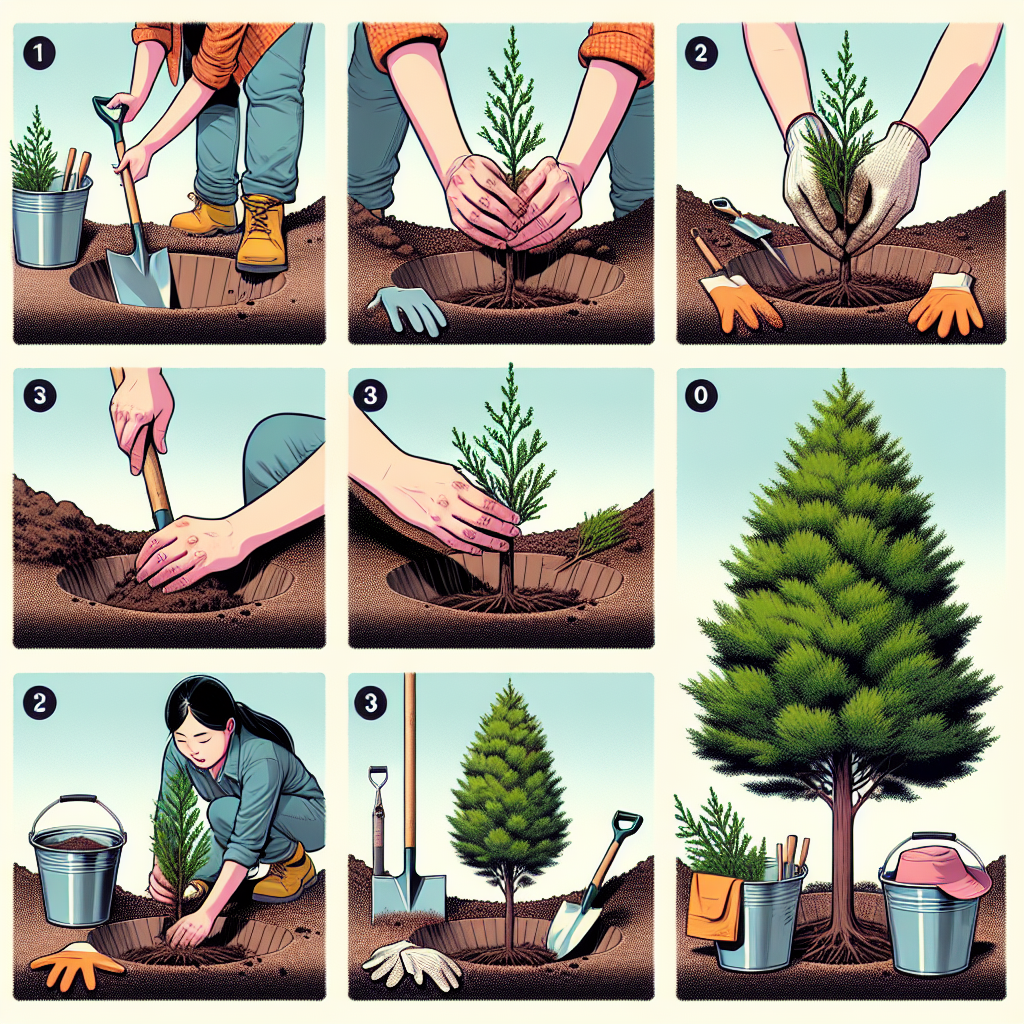
How to plant cypress trees
How to Successfully Plant Cypress Trees
Cypress trees are admired for their stunning appearance and adaptability, making them a popular choice for many landscapes. These majestic trees not only provide aesthetic appeal but also offer numerous environmental benefits, such as improving air quality and supporting local wildlife. If you're looking to incorporate cypress trees into your garden or landscape, this guide will walk you through the essential steps.
Understanding Cypress Trees
Cypress trees belong to the family Cupressaceae and are found in various species across the globe. Some of the most common types include:
- Bald Cypress - Known for its distinct knee-like structures that emerge from the ground.
- Montezuma Cypress - A towering tree often found in wetlands.
- Italian Cypress - Recognizable by its tall, narrow shape, making it ideal for formal gardens.
- Lawson Cypress - Valued for its beautiful foliage and adaptability.
Choosing the Right Location
Before diving into how to plant cypress trees, you must select a proper site that caters to their growth needs. Here are some key considerations:
- Sunlight: Cypress trees thrive in full sun, requiring at least six hours of direct sunlight each day.
- Soil Type: Well-draining soil is crucial. Cypress trees can tolerate wet soil and are often used in marshy areas.
- Space: Ensure there is ample room for the tree to grow, as some species can reach heights of over 100 feet.
Preparing to Plant Cypress Trees
Once you've chosen the right location, the next step involves preparing the site and gathering the necessary materials.
Materials Needed:
- Healthy cypress sapling
- Shovel
- Watering can or hose
- Mulch (wood chips or bark)
- Fertilizer (optional)
Steps for Preparing the Site:
- Clear the area of any debris, roots, or competing plants.
- Test the soil to ensure it's suitable for planting.
- Loosen the soil within the planting area to promote healthy root establishment.
How to Plant Cypress Trees
Now that you're prepared, it’s time to move on to the actual process of planting. Follow these steps carefully to ensure your cypress tree thrives:
- Select Your Sapling: Choose a healthy cypress sapling. Look for one with a straight trunk, vibrant foliage, and no signs of disease.
- Dig the Hole: The planting hole should be twice the width of the root ball and just as deep. This allows roots to spread easily.
- Prepare the Roots: If the roots are tightly bound, gently loosen them with your fingers.
- Position the Tree: Place the sapling in the center of the hole, ensuring that the top of the root ball is level with the surrounding soil.
- Backfill the Hole: Fill in the hole with the soil you removed, tamping it down lightly to remove air pockets.
- Water Thoroughly: After planting, water generously to help settle the soil and provide moisture to the roots.
- Apply Mulch: Add a 2-3 inch layer of mulch around the base of the tree, keeping it a few inches away from the trunk to prevent rot.
Initial Care After Planting
The first few months are crucial for the survival of your newly planted cypress trees. Here are the key care points to keep in mind:
- Watering: Regularly water the sapling, ensuring the soil remains moist, but not soggy.
- Fertilization: If the soil is poor, you might want to apply a balanced fertilizer in early spring to support growth.
- Pest Control: Monitor the tree for pests and diseases, particularly in the first year.
Long-Term Maintenance
As your cypress tree matures, continuing care is essential for its health and vigor.
Watering Needs
Despite their tolerance for wet soil, established cypress trees require consistent watering during dry spells. Aim for at least an inch of water each week.
Pruning
Pruning should generally be kept to a minimum for cypress trees. However, if you notice any dead or diseased branches, it's best to remove them to maintain overall health.
Pest Management
Cypress trees can attract pests such as aphids and scale insects. If you notice a sudden decline in the tree's health or spots on the leaves, consider consulting with a local arborist or horticulturist.
Common Challenges
Though cypress trees are generally hardy, you may encounter some challenges.
- Watering Issues: Both overwatering and underwatering can lead to stress or death. Always check the soil moisture levels.
- Pests: Regular inspection of your trees can help catch any infestations early.
- Environmental Stress: Rapid temperature changes or extreme weather can shock the tree; ensure you select a suitable species for your climate.
The Benefits of Planting Cypress Trees
Beyond their beauty, cypress trees provide numerous advantages:
- Wildlife Habitat: They offer shelter and food for various birds and small mammals.
- Soil Stabilization: Their deep roots can help prevent erosion, especially on sloped terrains.
- Air Quality Improvement: These trees contribute to air purification and carbon sequestration.
Conclusion
In summary, planting cypress trees can be a rewarding endeavor that enhances your landscape while also contributing to the environment. By following these steps on how to plant cypress trees and offering continued care, you can enjoy these magnificent trees for many years to come.
"Trees are the earth's endless effort to speak to the listening heaven." – Rabindranath Tagore
Consider adding cypress trees to your garden or landscape today, and witness the beauty and benefits they offer. Happy planting!
By Guest, Published on October 22nd, 2024